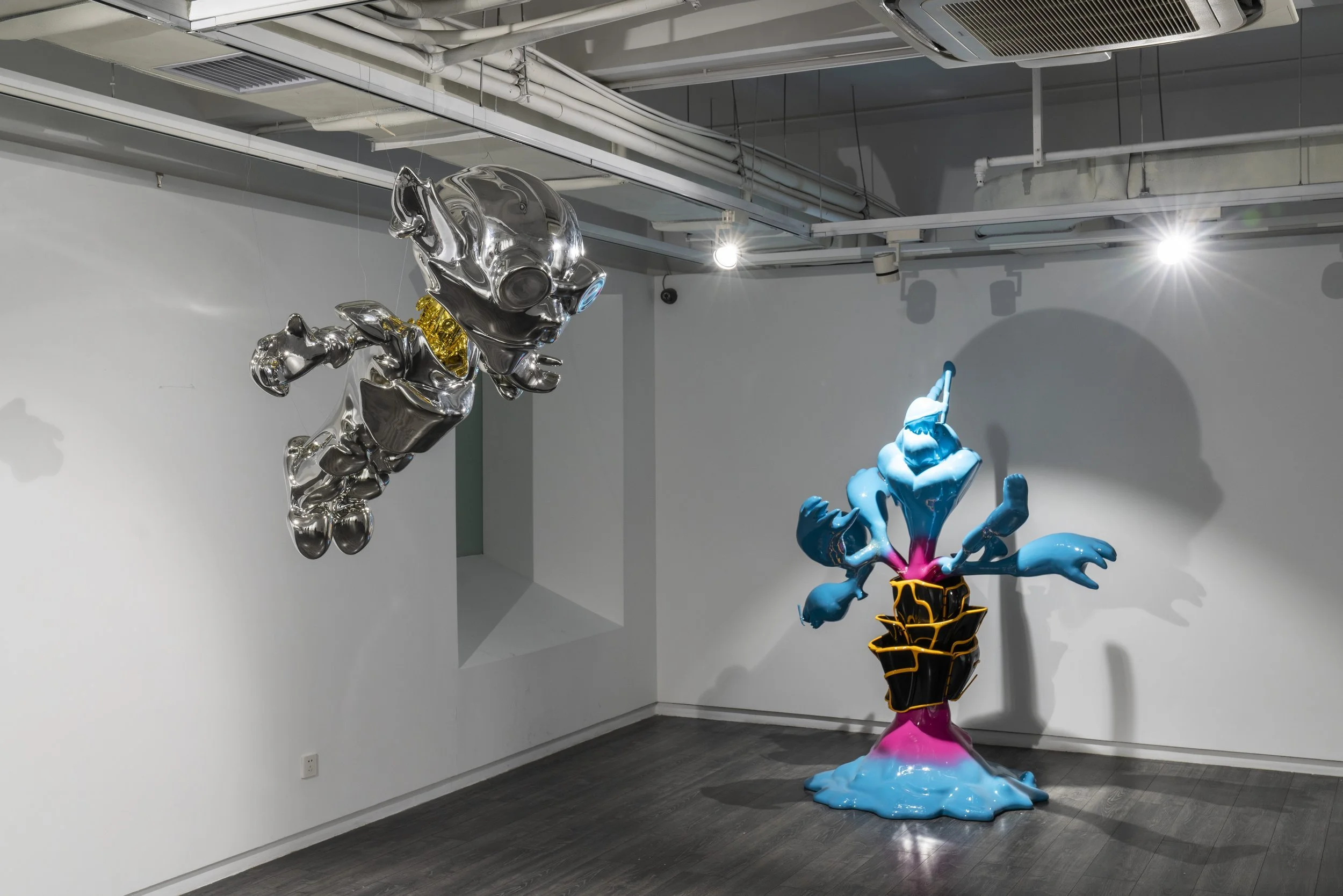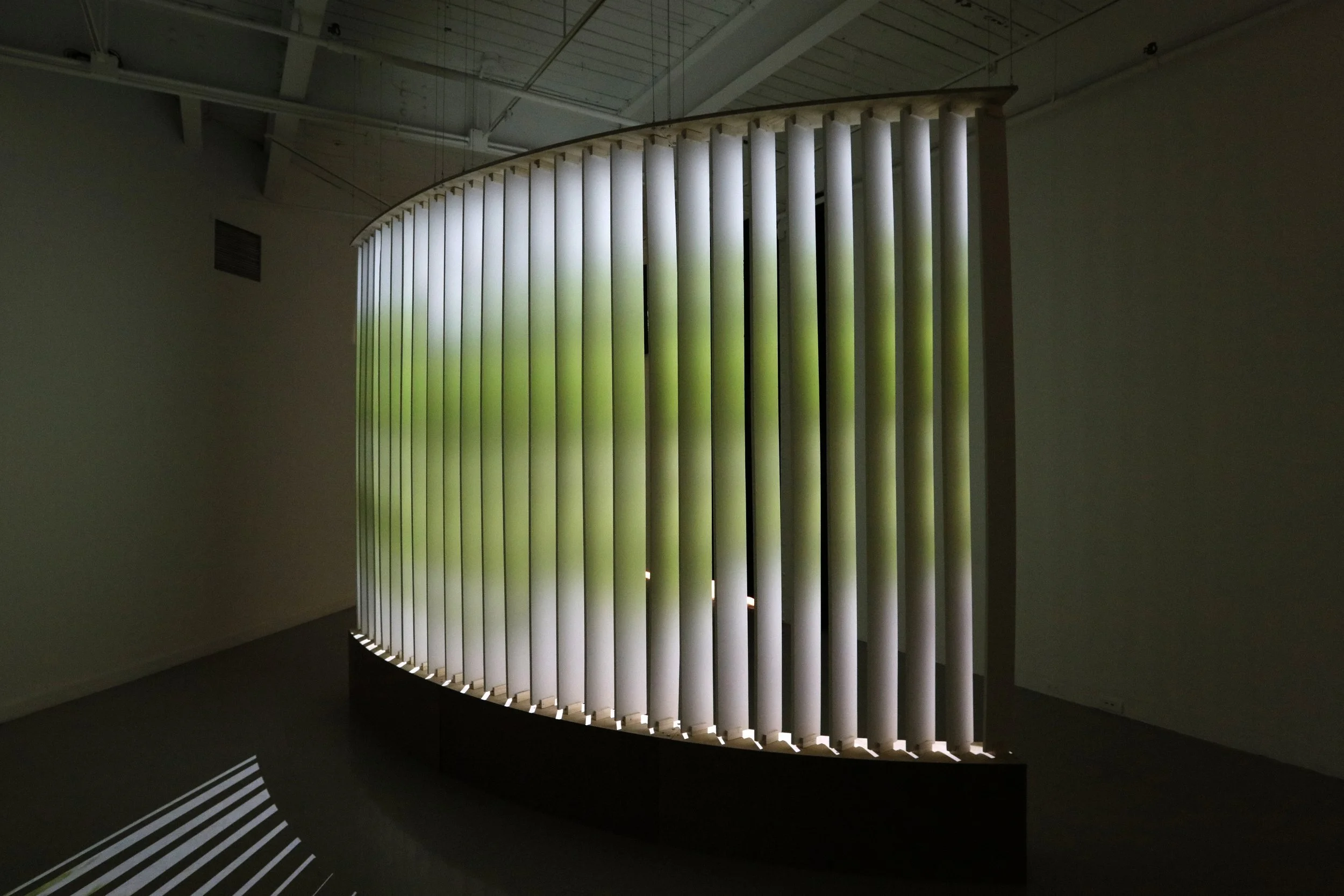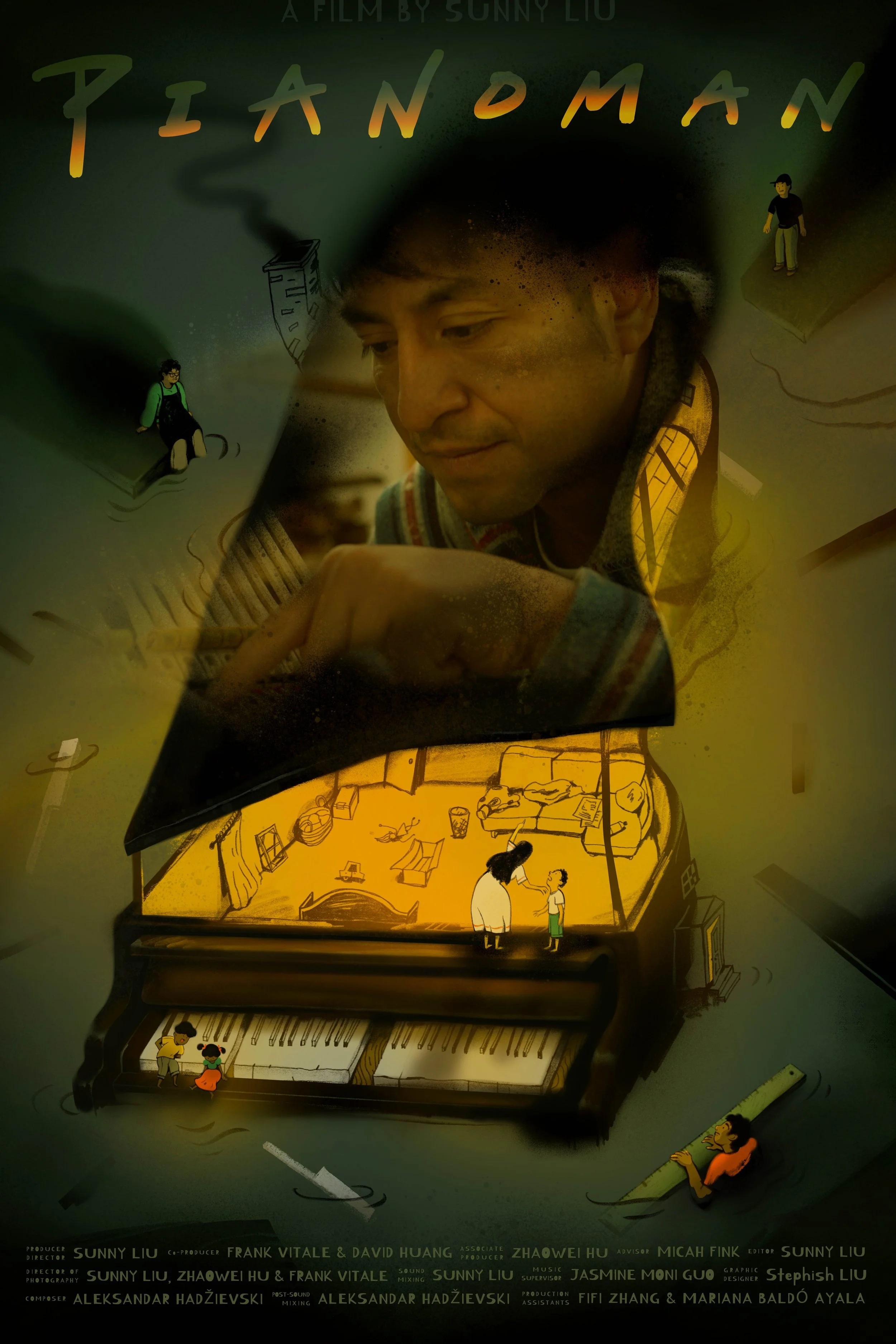10 Questions with Jiaxin Jiang
In the 24 years before going to the United States, the artist Jiang Jiaxin we are about to meet is a very obedient "child" and a very confused "young man." In his life in recent years, he has asked himself one question many times: Were I happy during my childhood? He seems to have no memory and recalls some with birch leaves, wind, low buildings with red brick walls, sunset, simple living environment after rain, and extremely strong earthy smell. (It's not easy to smell it, but this smell can travel through time, yes, you smell it, it's there!), and a few toys that my aunt bought for me; other than that, there seems to be no story worth telling.
"Oh, by the way, there's also the boxed lunch my grandfather delivered to me when I was in primary school, and it's still steaming!"
All this changed at the age of 24 when he made the first and most important decision in his life. He bid farewell to the urban planning major that he was about to start studying in the United States and turned to carry out postgraduate studies in fine art photography. He still doesn't know how he moved the professor to enter this postgraduate program for study. Now, he still takes that decision as his greatest pride so far, and it is one of the greatest gratitudes for being admitted to the University of Oklahoma's graduate program of fine art photography. Later, when he described his three-and-a-half-year study career, he said that was the real beginning of his life.
During the three and a half year study career as a graduate student at the University of Oklahoma, Jiang Jiaxin won more than 10 scholarships of various types. In the final year of graduate school, he received a full scholarship from the school and joined the school's daily teaching and planning as an active teaching assistant.
Among so many awards, what Jiang Jiaxin is most excited about is that in the 103rd Annual School of Visual Arts Student Exhibition in the year of his graduation in 2017, his work was selected as the Grand Prize of the Jury. The jury is artist Joe Andoe.
In recent years, Jiang Jiaxin's works have been mainly exhibited and collected in the United States and China and have been invited by the Sichuan Academy of Fine Arts, A4 Art Museum, By Art Matters 天目里美术馆 Art Museum and other art institutions for residency and interviews. With the subsequent changes in art forms and career development, he will devote more energy to his creations and actively promote them.
Jiang Jiaxin was born in Dunhua City, Jilin Province, China in 1990. He completed his undergraduate degree at Northeastern University at Qinhuangdao, majoring in environmental science.
Jiaxin Jiang - Portrait
ARTIST STATEMENT
In the past nine years, Jiang Jiaxin's works have been exploring the documentation and expressiveness of art, revolving around the representation of the narrative and the surreal nature of art. Both relying on images and videos for creation, his works are inseparable from his research on photography in the context of art. In terms of theme, Jiang Jiaxin's works were initially developed across self-identity and cultural perception under the collision of the cultures of China and the United States. In addition, as the project progressed, his works began to focus on collective identity cognition and changes in the time dimension, as well as the social meaning of culture.
In the next stage of creation, he will continue to explore the representation of social identity under the influence of multiculturalism. Meanwhile, he will conduct research on emotions, desires, and intimacy catalyzed by the real world.
2020 I, film, 2020 © Jiaxin Jiang
INTERVIEW
Please, introduce yourself to our readers. What is your background, and how did you start getting involved with art?
Hello everyone; my name is Jiaxin Jiang. I obtained my undergraduate degree in Environmental Science in China. Later, I pursued my graduate studies in Photography at the University of Oklahoma in the United States, which falls under the intersection of art, technology, and culture.
Unexpectedly, I stumbled upon a question (in late 2013) while attending the University of Oklahoma: "Should I be responsible for myself? Should I study what I like or what I dislike?" In this state of confusion and hesitation, I came across the graduate program in art at the university, which included a major in photography. I then sent the most important email of my life, hoping to meet the graduate liaison and passionately introduce myself.
If there is a question about how I began my journey in the arts, I believe this is the answer.
You primarily work with photography, but you originally studied environmental science in China and urban planning. Do these fields influence your current practice at all?
Well, that's a good question, and many people have asked me that question. My answer is no.
The first and so far the only decision I made for myself in my life was to study art. I'm now working on my second decision in life.
From your biography, we can clearly understand that moving to the US and going into your postgraduate major in photography completely changed your life. What are the key factors of this change? And what did you discover about yourself in the process?
The change is still working. The key factor behind this transformation was the professors and friends I met during my graduate studies.
Each professor had a profound impact on my transformation. Todd Stewart, my mentor, guided, advised, and critiqued my art creations. He also provided warmth and love by inquiring about my life and family. Robert Bailey, my art history professor, offered me many artists to research and study based on my interests. Curtis Jones, my printmaking professor, agreed to meet me after receiving my self-recommendation letter in late 2013. We discussed my academic studies and future plans. Looking back, if I hadn't met him at that moment, none of the subsequent content would have happened.
Pete Frosile, a member of my graduate committee, encouraged my creations and helped me establish an artist's attitude and confidence. Cathleen Faubert challenged me, critiqued my work, constantly asked me questions, explored with me what kind of art I was making, and discussed the artists in the field and their works. In addition, other professors at the art college also gave me a lot of encouragement and confidence during my graduate studies.
Several friends I met in the United States, from philosophy, anthropology, computer science, architecture, and other related fields, have remained in regular video communication with me. They are also key factors in changing my life. Although they are not students in the art college, they have always been proud of me and my work. They continuously encourage me, give me confidence and faith, and are genuinely happy because I am happy.
During my time studying in the United States, I discovered the following: I seemed to have returned to my origin, the meaning of my life. I am an artist, and I love art. I love discussing art, creating art, and exploring and discovering the world and humanity in an artistic context. The main reason for my obsession with art is that it has changed my life.
What other key experiences, both personal and artistic, had a long-lasting influence on your practice?
After entering 2023, everything in my life has been rapidly changing. If this question is directed towards the latest version of myself, then my answer would be: The bad things that have been done to me by truly bad people and the countless failures I have experienced at different stages of my life.
The year of dog, film, 2018 © Jiaxin Jiang
The year of dog, film, 2018 © Jiaxin Jiang
You are now a teaching assistant and researcher. What do you aim to teach, and, on the contrary, what do you still want to investigate?
My teaching goals have two points:
1. I aim for my students to learn through a combination of theory and practice. In my experience, this approach is often a one-way requirement where the teacher demands this of the students. However, I believe that it is my responsibility to create the conditions or environment that allow for theory and practice to be integrated. This requires me to constantly learn, communicate with my students, design effective teaching activities, and work together to complete them.
2. I need to design a positive learning experience for my students. Throughout the teaching process, I want to infuse my humor, passion, and compassion into the entire experience. I want my students to feel seen, heard and loved in a safe environment where they can create, experiment, discuss, and fail without fear of being judged or ridiculed. I will be their teacher, but more importantly, I want to be their friend. I will not abuse my position of authority but rather focus on imparting knowledge that will bring light to their lives. Together, we will learn and grow, and I will equip them with the tools to succeed. In summary, as an artist and educator, I want to infuse this teaching philosophy into every aspect of my teaching process, even if it may not have been done before.
Currently, I am interested in exploring ways to increase reading materials, continuously learn and research, and incorporate diverse cultures and media into my teaching without any biases.
The 6th documentary, film, 2022 © Jiaxin Jiang
In your statement, you define your work as an exploration of the "documentation and expressiveness of art." Could you elaborate more on this concept?
Of course. Due to limited space, I will briefly explain here.
Most art is about expression, mainly from the perspective of form, for all-round expression. But my early art practice and exploration came from my own life records, all of which stemmed from this simple reason. Because my academic background was not in art, all I had at the time was my small phone and a single-lens reflex camera, so I started recording based on my interests, just like most contemporary young people who like to take pictures of everything. Starting in 2014, when I started studying art, I brought my records into the context of art research, thinking, and creation. Since then, my records have undergone essential changes. From single photography works to a series of photography projects, to multidimensional sound, text, and photography combinations, to my first documentary film shot in early 2017, to the seventh documentary film completed at the beginning of this year, they are all completing infinite and complex work in the form of records. They rely on my identity recognition and cultural issues of concern to occur and evolve. By using the form of a documentary to express art, what I mean by "documentation of art" should be the expression of this.
I am aware that my documentary, as an art piece, is different from template-style documentaries and commercial movies. I hope that my documentary can receive more screenings and promotions, and I also hope that my record-keeping behavior can receive more recognition and support. Let more people realize that this "seemingly simple thing" is also an art piece because the core content of art does not lie in form, but in the resonance it evokes and the social impact it generates.
The meaning of the word "expressiveness" can be understood as a general artistic creation. To put it plainly, an artist does whatever they want, and the work they create is their "expressiveness of art." I believe that the expressiveness of my work has been very little in the past nine years, and I know many people may not agree with me, but this is just my own measuring scale. Here, I also emphasize that the core content of art is not the form. I think I have been recording my life experiences and photos in other forms, such as my documentary works and digital painting works. However, this way of creation in the early days gave me a source to rely on, and I felt secure in the creation process. It was like an academic study, with each step linking to the next. If you can explain an artwork from scratch to a stranger in a laboratory, and they can understand it, then that is what I understand as art.
Compared to my past, my understanding of art has undergone significant changes, especially since entering 2023, but this change is based on the accumulation of my art creation and practice over the past nine years. In my next stage of research and creation, I will naturally focus on expression, including the creation themes and information presented in my work. I think all of this comes from the breakthrough in my identity recognition as an artist and my increasing confidence in art creation. I am excited thinking about it now.
Speaking of mediums, you use photography but also video. What is the medium you find closer to your practice?
None of them are accurate. I would prefer "photography" to be my answer, but it's not precise enough for this question. What I mean is that "image" is closer to my practice.
The best year, film, 2021 © Jiaxin Jiang
The videos and audios (1.26-2.13) from my hometown, Dunhua, Jilin, China, film, 2017 © Jiaxin Jiang
Your work reflects on identity, both from a personal and a collective standpoint. What are your takes on this subject?
My biggest observation is that our identities all originate from our families and are influenced by them from occurrence to development, which includes family personality, family hobbies, family values, and so on. From birth, every person has the shadow of parents and family because parents are our first teachers, I think so.
But identity changes as a person grows up, and you don't have the surreal ability to see what kind of person a person will become in the future. I think that in the later stages of identity shaping, the influence comes from family and society. But the most fundamental identity perception for a person is the self-perception of who they are, what they do, what they want to be, their hobbies, and so on. However, this seemingly simple concept is something that most people do not recognize or know at all in their lifetime. This is the reality.
Are you currently working on any new series, or do you have any exhibitions planned in the near future?
Yes, I have just recently started working on my new work, which is digital painting. Right now, I am participating in a group exhibition of young Chinese artists in Jiangsu province with my series of digital paintings of A Comic Book of America. I'm going to put all my energy into creating my work and learning new media this summer, and as soon as the summer is over, I'll be approaching new exhibition opportunities and contacts.
And lastly, what are your goals for this year?
It's quite a lot, and every month and every day, I'm setting goals for myself. To name a few important ones: make an animation, keep reading, create new works, and complete some important project applications






















